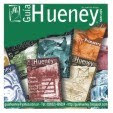by José Roberto Espinosa
Environmental Especialist
Deforestation and forest fires have destroyed 70% of forest and jungle areas in our country during the last decades. San Luis has also suffered the effects of these devastating actions: the annual deforestation rate in the period 1998/2002 was the highest at the world average level, and it was also higher than those of provinces with similar phytogeographic characteristics, such as Formosa, Chaco and La Pampa. This fact cannot be underestimated when it comes to thinking about laws regulating the use and preservation of San Luis native forests, especially in the context of the need for actions to stop the critical state of species like the Prosopis – carob, tintitaco and caldén - which are now endangered.
The passing of the National Act No. 26331, which deals with the protection of native forests and the allocation of a budget for environmental issues, was a very important step in the field of preservation, since it stipulates that every province must work on the creation of laws aimed at preserving native forests in their territories. It also provides for the creation of different categories of preservation according to the environmental value of species and the benefits forests imply.
This Act also makes clear what should be considered a native forest, namely: natural forest ecosystems - especially those made up of old native tree species- , diverse associated flora and fauna, the surrounding areas (soil, subsoil, atmosphere), climate and water resources, which form inter-dependent zones with their own characteristics and multiple functions. This definition leads one to think that those ecosystems made up of bushes and/or natural grassland areas should not be considered native forests. And this is apparently what was taken into account when the natural forests map was designed. This map, which is part of the Appendix I of the Act IX-0697-2009, does not show bush areas and grasslands as native forests. What is more, it leaves those areas uncategorized, which is a big mistake, given the fact that they are important ecosystems which must be preserved and carefully handled.
So, most of the orographic system of San Luis sierras – where the most important river basins originate - was not included in any protected category. The same happened with the large plains in the Pampa grasslands, which cover an area of approximately 2 million hectares.
The dune area - with grasslands and Chilean Palos verdes (Geoffroea decorticans) grouped in small islands - which I have referred to above, is made up of vegetated fossil dunes and recently formed sand dunes. Dunes, which originate in sandy soils, are made up of a fine sand area which ranges from the mid-center to the south of San Luis. Dunes form an ecotonal zone with the phytogeographic region of the southeast and with the west area, which makes its flora much more diverse and richer. This should be a characteristic worth taking into account when assessing and revising the Act.
The territorial planning map approved by the Provincial Act IX-0697-2009 considers 3 categories:
Category I - RED: high conservation value areas which should not be transformed
Category II - YELLOW: mid-conservation value areas which can be restored. These areas have a high value of conservation and may be used in the following ways: sustainable use, tourism, scientific collection and research
Category III - GREEN: low conservation value areas can be totally or partially transformed, though within the legal framework.
San Luis Environmental Associations suggested Category IV – ORANGE for areas which should be preserved, such as algarrobo and carob forests. The orographic system of San Luis sierras is also included in this category, as well as the Pampa grasslands and the caldén forests.


